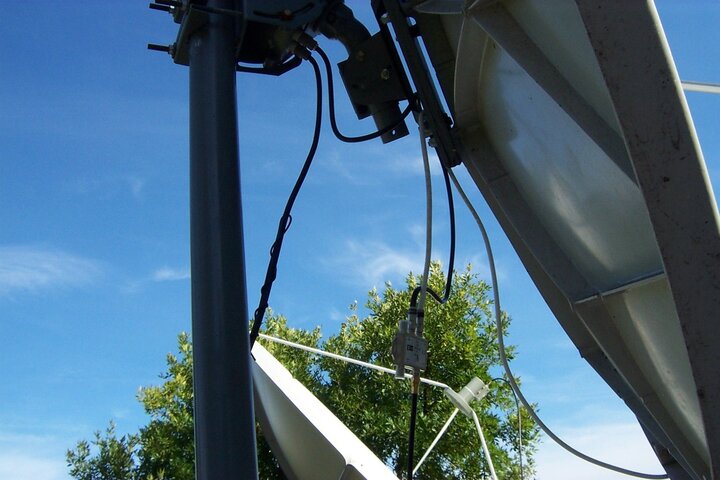I have the following dishes that I would like to add to one receiver:
1) Motorized KU (SG2100)
2) Stationary KU
3) Stationary C
Tonight I used a 4 port DiSEqC switch by doing the following:
1) Motorized KU LNB to SG2100 to Input 1 DiSEqC.
2) Stationary KU LNB to input 2 DiSEqC.
3) Stationary C LNB to input 3 DiSEqC.
4) Output of DiSEqC to Coolsat 4000 receiver.
After setting up satellites within the Coolsat 4000 menu's it worked, but the motorized dish would not move.
Thinking that power wasn't being passed thru the DiSEqC switch I changed the coax cables on the motorized dish as follows:
1) Motorized LNB to input 1 of DiSEqC switch. Kept stationary KU on input 2 and stationary C on input 3.
2) Then took output of DiSEqC switch into LNB input of SG2100 H-H motor drive. Output of SG2100 was then connected to receiver.
This worked, but I don't like how KU dish moves whenever I want to switch to the stationary KU or stationary C dish. The motorized KU dish also often got confussed and wouldn't stop on a selected satellite. Instead it would keep on moving until I quickly selected another satellite. My satellites are configured using DiSEqC instead of URALS, so this may be interfering.
What would be the proper way to hook up all three dishes to one receiver if one is motorized?
1) Motorized KU (SG2100)
2) Stationary KU
3) Stationary C
Tonight I used a 4 port DiSEqC switch by doing the following:
1) Motorized KU LNB to SG2100 to Input 1 DiSEqC.
2) Stationary KU LNB to input 2 DiSEqC.
3) Stationary C LNB to input 3 DiSEqC.
4) Output of DiSEqC to Coolsat 4000 receiver.
After setting up satellites within the Coolsat 4000 menu's it worked, but the motorized dish would not move.
Thinking that power wasn't being passed thru the DiSEqC switch I changed the coax cables on the motorized dish as follows:
1) Motorized LNB to input 1 of DiSEqC switch. Kept stationary KU on input 2 and stationary C on input 3.
2) Then took output of DiSEqC switch into LNB input of SG2100 H-H motor drive. Output of SG2100 was then connected to receiver.
This worked, but I don't like how KU dish moves whenever I want to switch to the stationary KU or stationary C dish. The motorized KU dish also often got confussed and wouldn't stop on a selected satellite. Instead it would keep on moving until I quickly selected another satellite. My satellites are configured using DiSEqC instead of URALS, so this may be interfering.
What would be the proper way to hook up all three dishes to one receiver if one is motorized?


